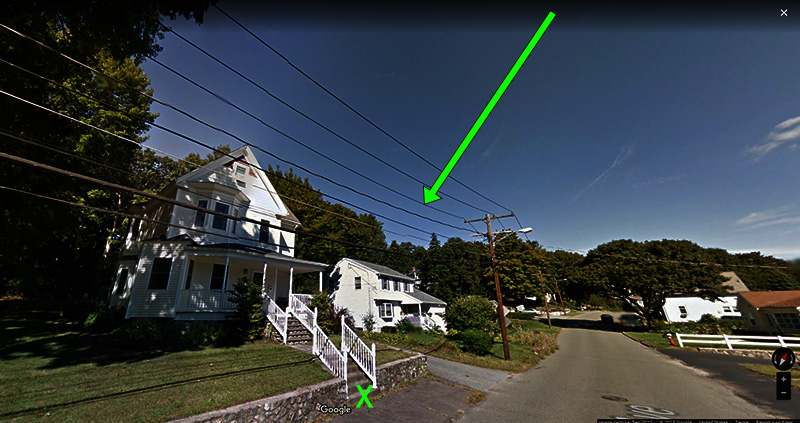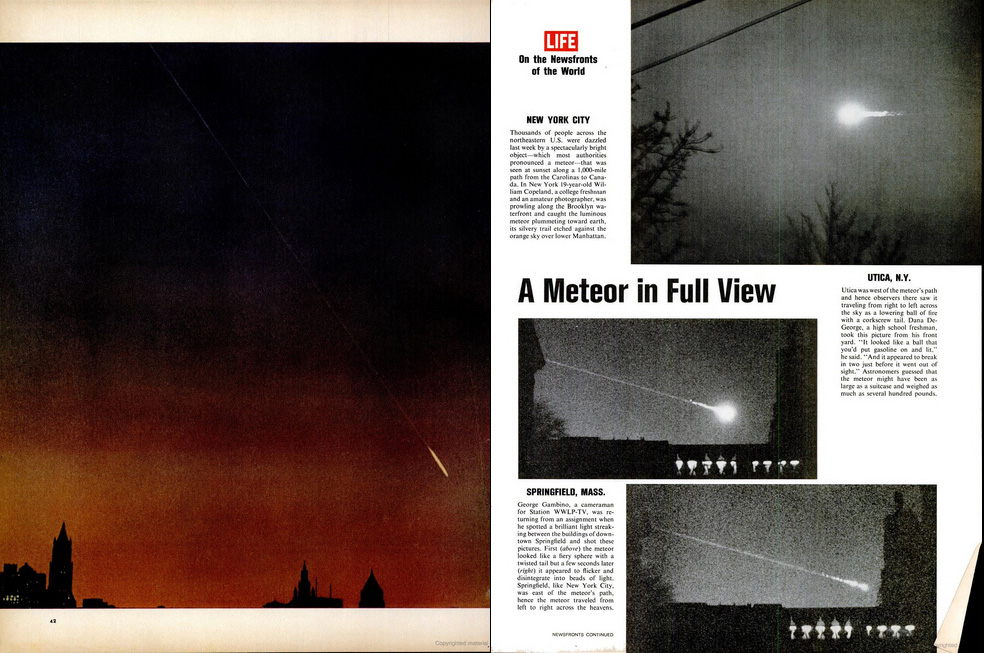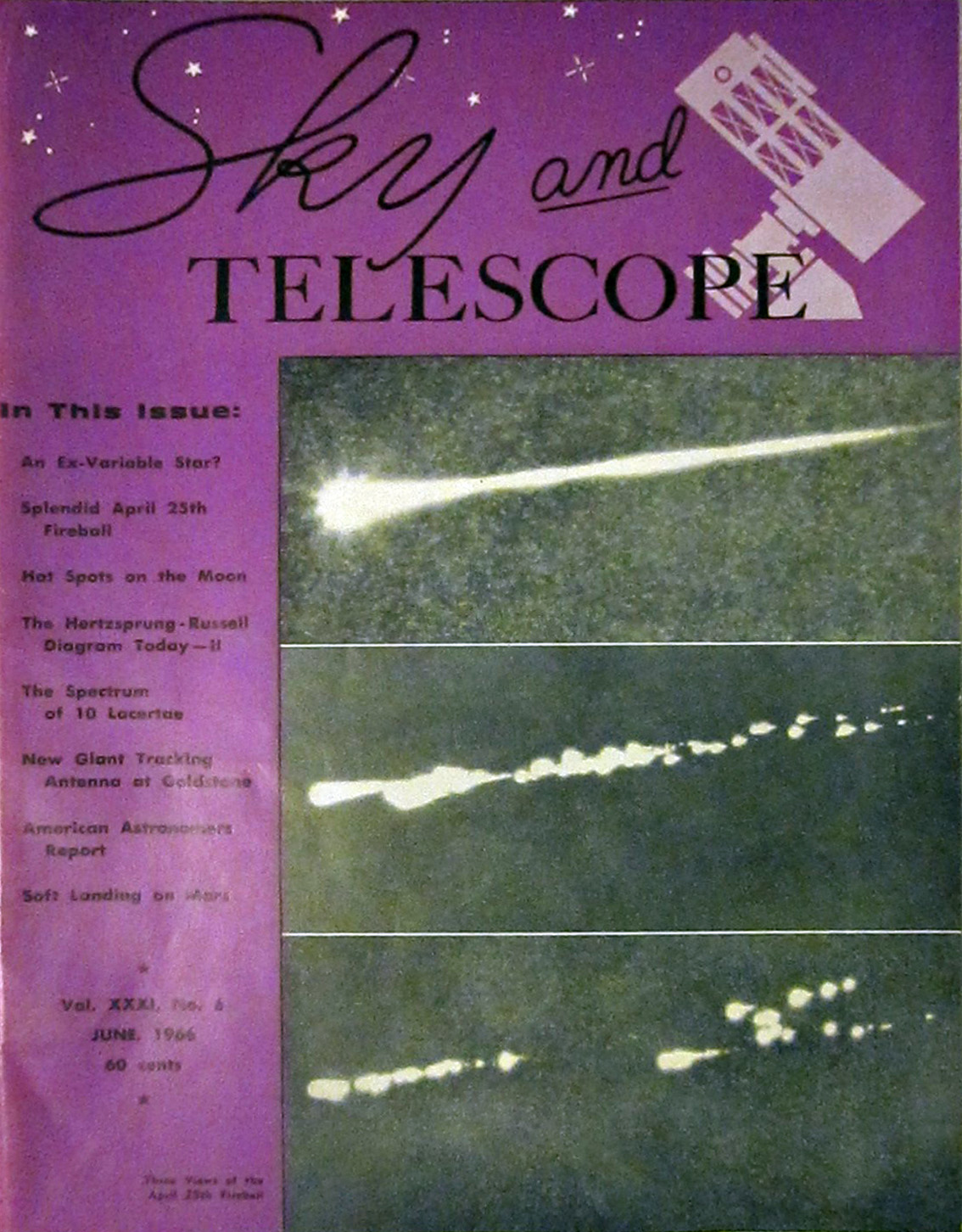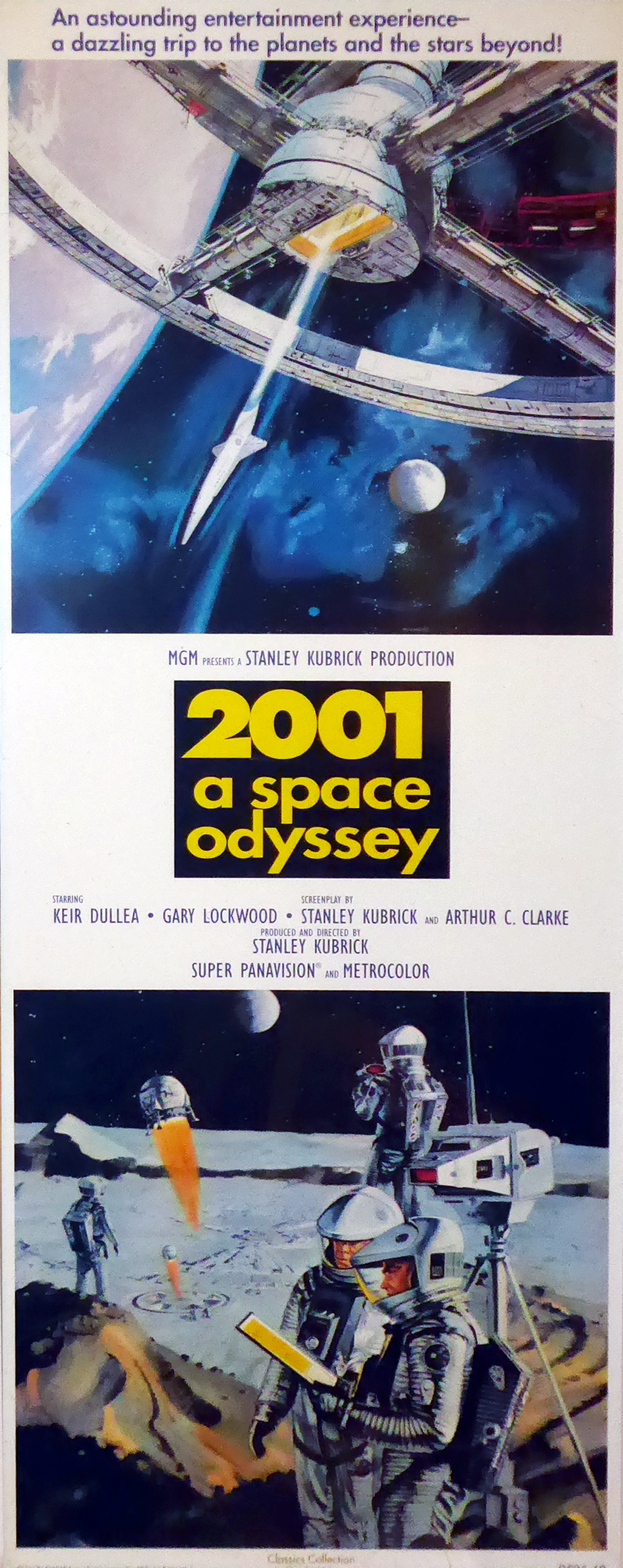After writing yesterday of my fireball meteor experience as a kid, I did a little digging and found out I was wrong about two things: First, I was actually a few months shy of my seventh birthday when it happened, which, thanks to the fairly amazing web, I discovered was 7:14pm Eastern Time on Sunday, 25 April 1966. Second, the fireball lasted almost 30 seconds, not 8. I knew it was visible for a long time, and my friend and I saw it from the start, but I was being conservative with my recall. Because I remember us shouting – likely pretty tame stuff like “Holy crap!” – and, I think, leaping up and down for quite a while, my recollection was 20 seconds or more, but I doubted that as I wrote the post because even 10 seconds is a long time for any meteor to be visible. I shall trust my memory more in future.
It was called the “Great Fireball of 1966” and was widely seen on the East Coast of the US and in Canada. It was a bolide – meaning it broke up as it sped in – estimated to be 5-10 feet across, and since it wasn’t part of any expected meteor shower, it might have been a small asteroid. It was written up in Life magazine and Sky & Telescope at the time – pictures from those issues below.
When we saw it, it seemed to be only several miles above us, maybe forty or fifty thousand feet, but the show we saw actually began near the Kármán line, commonly accepted as the point space begins, 62 miles/100 km up. Its initial altitude of 327,000 feet explains why it seemed to move fairly slowly.
A research paper dissecting the meteor was published in the Journal of the Royal Astronomical Society of Canada and is available here.
I said in yesterday’s post that I could show where we were and the path of the meteor, and so I can with Google Street View. My house was just to the left of frame here, and we were next door, sitting on the steps at street level at the green X. I’ve darkened the sky in this image to approximate the light at the time, and the color of the line in the sky is just about the color of the meteor we saw, except it was matchhead-bright, of course. I can’t recall precisely if it went below the horizon, but I believe we did see it breaking up toward the end.
You can click either of these two images for a larger version:
This was a heady time for me. I was already heavily into the space programme, with Gemini in full swing and Apollo about to start. The next milestone for me was this oblique view of the Copernicus crater on the Ocean of Storms, sent back by Lunar Orbiter 2 seven months later, in November 1966:
This photograph, iconic at the time, came to be known as “the picture of the century” and it’s hard for me to disagree. It was taken from an altitude of 27 miles/45 km and 200 km/125 miles away from the centre of the crater. No one had seen such a spectacular view of the moon before. The funny thing is, the photo was entirely unintentional. They simply needed to advance the film in the onboard camera, so they fired a couple of “housekeeping” exposures – random ones as far as they were concerned, but just look at what they got.
That photo was mind-bending for me and made more concrete the prospect of people being there, which would happen in just a couple more years. Before that happened, 2001: A Space Odyssey was released in April 1968 and I saw it at its Boston premiere on a huge, curved Cinerama screen perhaps seventy feet wide. Eight months after that, Apollo 8 carried the first men to leave the Earth and orbit the moon. And then it just got better and better from there. It was one helluva time to be alive.
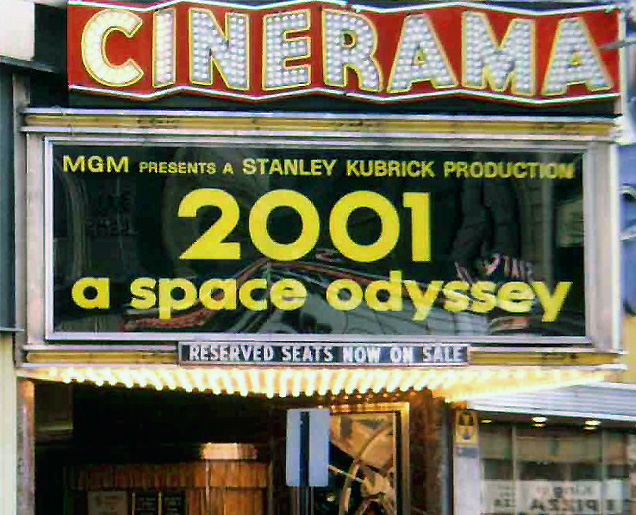
Marquee of the RKO Boston Theatre, April 1968

